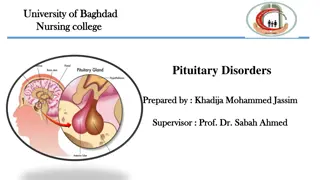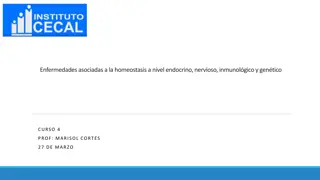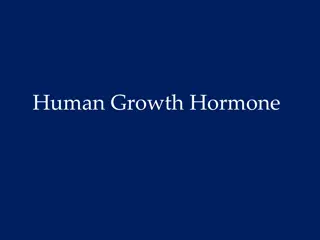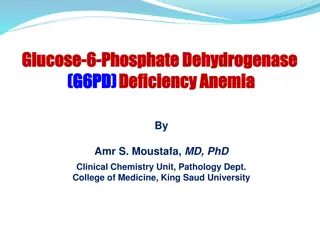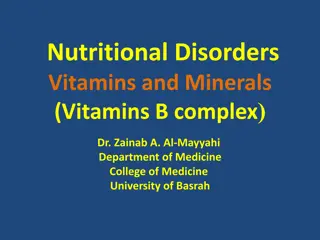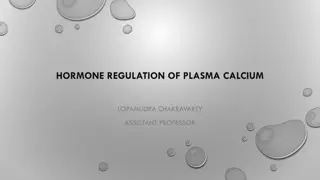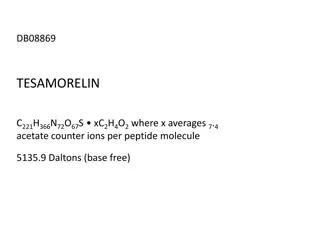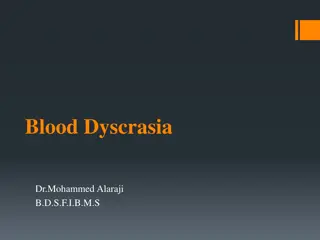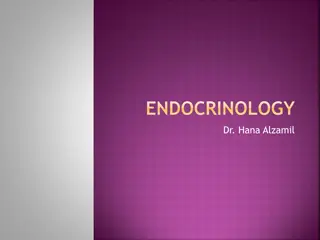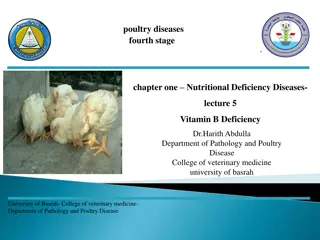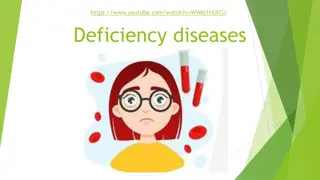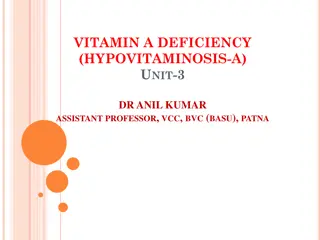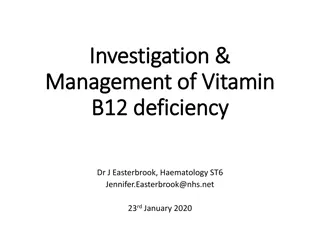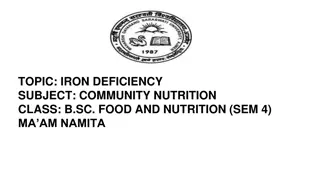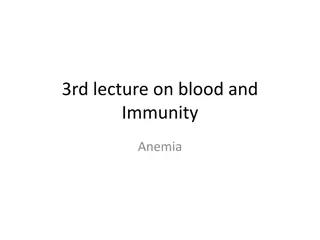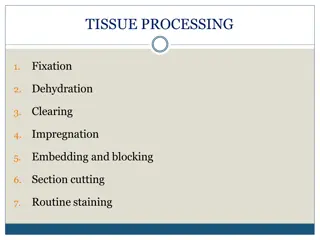Growth Hormone Deficiency in Adults: Etiology, Diagnosis, and Treatment
The complexities of growth hormone deficiency in adults, including diagnostic challenges, transition period considerations, and treatment strategies. Explore the clinical manifestations, diagnostic criteria, and monitoring protocols. Learn about the role of insulin-like growth factors in the diagnosis and the importance of a reliable stimulation test. Discover guidance from the GH Research Society on testing criteria and patient assessments during the transition from pediatric to adult care.
Download Presentation

Please find below an Image/Link to download the presentation.
The content on the website is provided AS IS for your information and personal use only. It may not be sold, licensed, or shared on other websites without obtaining consent from the author.If you encounter any issues during the download, it is possible that the publisher has removed the file from their server.
You are allowed to download the files provided on this website for personal or commercial use, subject to the condition that they are used lawfully. All files are the property of their respective owners.
The content on the website is provided AS IS for your information and personal use only. It may not be sold, licensed, or shared on other websites without obtaining consent from the author.
E N D
Presentation Transcript
Dr. C. Mercy, Assistant professor, PG Department of zoology, Sarah Tucker College, Tirunelveli.
Biochemistry and Biophysics Nucleic acids: metaboism of purine and pyrimidine nucleotides.
Purine biosynthesis: Synthesis aminoimidazole ribosyl- 5- phosphate (VII) from ribose 5- phosphate (I). (through -5- phosphoribosyl -1-phosphate (PRPP) Synthesis of inosine monophosphate (XII) from aminoimidazole ribosyl-5- phosphate. 1. The pathway of De novo purine biosynthesis from ribose 5- phosphate and ATPstart with transfer of pyrophosphate from ATP to C-1 of D- ribose-5- phosphat (I) froming 5-phosphoribosyl pyrophosphate (II) which is also an intermediatein NAD+, NADP+, and pyridimine nucleotide biosynthesis and in purine salvage. (PRPP- is 5-phopsoribosyl -1-pyrophosphate. 2. Displacement of pyrophosphate from PRPP (II) by the amide nitrogen of glutamine forms 5-phospho- -D-rybosylamine (III). The reaction involves inversion of configutation at C-1 and from what will become the -N glycosidic bond. 3. Condensation of (III) with glycine forms glylinamide ribosyl-5-posphate (IV).
4. Transfer to (IV) of a formyl (C-1) from N5, N10-methenyl-tetrahydrofolate forms formyl- glycinamide ribosyl-5 phosphate (V). 5. Transmidation of (V) by the amide nitrogen of a second glutamine forms formylglycinamidine ribosyl-5-phosphate (VI). 6. Elimination of water accompanied by ring closure forms aminoimidazole ribosyl-5- phosphate (VII). The initial event is phosphoryl group transfer from ATP to the oxo function of (VI).nucleophilic attack by the adjacent amino nitrogen then displaces p with accompanying ring closure. 7. Addition to (VII) of corequires neither ATP nor biotin and forms aminoimidazole carboxylate ribosyl-5-phosphate (VIII). 8. reaction7 (and 8) resemble conversion of ornithine to arginine in the urea cycle. Condensation of asparate with (VIII) forms aminoimidazole succinil carboxamide ribosyl-5-phosphate (IX).
8. reaction7 (and 8) resemble conversion of ornithine to arginine in the urea cycle. Condensation of asparate with (VIII) forms aminoimidazole succinil carboxamide ribosyl-5-phosphate (IX). 9. Loss of the succinil group of (IX) as fumarate forms aminoimidazole carboxiamide ribosyl-5-phosphate (X). 10. Formylation of (X) by N10 formyl tetrahydrofolate forms formidoimadazole carboxamide ribosyl-5-phosphate (XI). 11. Ring closure of (XI) forms the first purine nucleotide. Inosine monophosphate IMP(XII). Oxylation of IMP forms AMP and GMP.
Pyrimidine biosynthesis: Pathway of pyrimidine biosynthesis differ from purine synthesis in previous pyrimidine ring synthesis followed by ribosopphosphate connection. 1. Pyrimidine biosynthesis begins with the formation from glutamine ATP and CO2 of carbomoyl phosphate. This reaction is catalyzed be cytosolic carbomoyl from the mitochondrial carbomoyl phosphate synthetase funtional in urea synthesis. Compartmentation thus provides independent pools of carbomyl phosphate for each process. 2. condensation of carbomyl phosphate with asparate forms carbomoyl asparate in a reaction catalized by asparate trans carbamoylase. 3. Ring closure via loss of water catalyzed by dihydroorotase forms dihooroticacid. 4. Abstarction of hydrogens from C5 and C6 by NAD introdues a double bond forming orotic acid areation catalyzed by mitochondial diphydrorohate dehydrogenase. All other enzymes of pyrimidiine biosynthesis are cytosolic.
5. Transfer of a ribose phosphate moiety from PRPP (5-phosphoribosyl-1-pyrophosphate) forming orotidine monophosphate (OMP) is catalyzed by orotate phosphoribosyl transferase. Formation of the -N glycosidic bond thus is an analogous to the tranryrybosylaton reactions. Only at the penultimate reaction of UMP synthesis is the pyrimidine ring phosphoribosylated. 6. Decarboxylation of orotidylate forms uridinemonophosphate (UMP) the first true pyrimidine ribonucleotide. 7. Reaction 7 and 8 phosphate transfer from ATP yield uridinediphosphate (UDP) and uridinetriphosphate (UTP) in reactions analogous to these for phosphorylation of purine nucelotide monophosphate.
8. (8) uridine diphosphate (UDP) uridine triphosphate (UTP). 9. Reaction (9) uridine triphosphate (UTP) is aminated to cytidinemonophosphateCTP by glutamine and ATP. Reduction of ribonucleotide diphophate (nucleotide diphosphate (NDPs) to their corresponding deoxynucleotide diphosphate (dNDPs) involves reaction analogous of the purine nucleotides. 10. dUMP may accept a phosphate from ATP forming dUTP (not shown). Alternatively and since the substrate for TMP synthesis is dUMP, dUDP is dephosphorylated to dUMP. 11.Methylation of dUDPat C-5 by N5, N10- methylene-tetrahydrofolate catalyzed by thymidylate synthetase forms thymidinemonophosphate (TMP).
REGULATION OF PYRIMIDINE NUCLEOTIDE BIOSYNTHESIS: Gene Expression and Enzyme Activity Both Are Regulated: The first two enzymes of pyrimidine nucleotide biosynthesis are sensitive to allosteric regulation and the first three and last two enzymes of the pathway are regulated at the genetic level by apparently coordinate repression and derepression. Carbamoyl phosphate synthesis II is inhibited by UTP and purine nucleotides but activated by PRPP. Aspirate transbamoylase is inhibited by CTP and activated by ATP a classic example o f allostery. Control of pyrimidine nucleotide synthesis solid lines represent chemical flow. Broken lines represent positive (+) and negative (-) feedback regulation.


